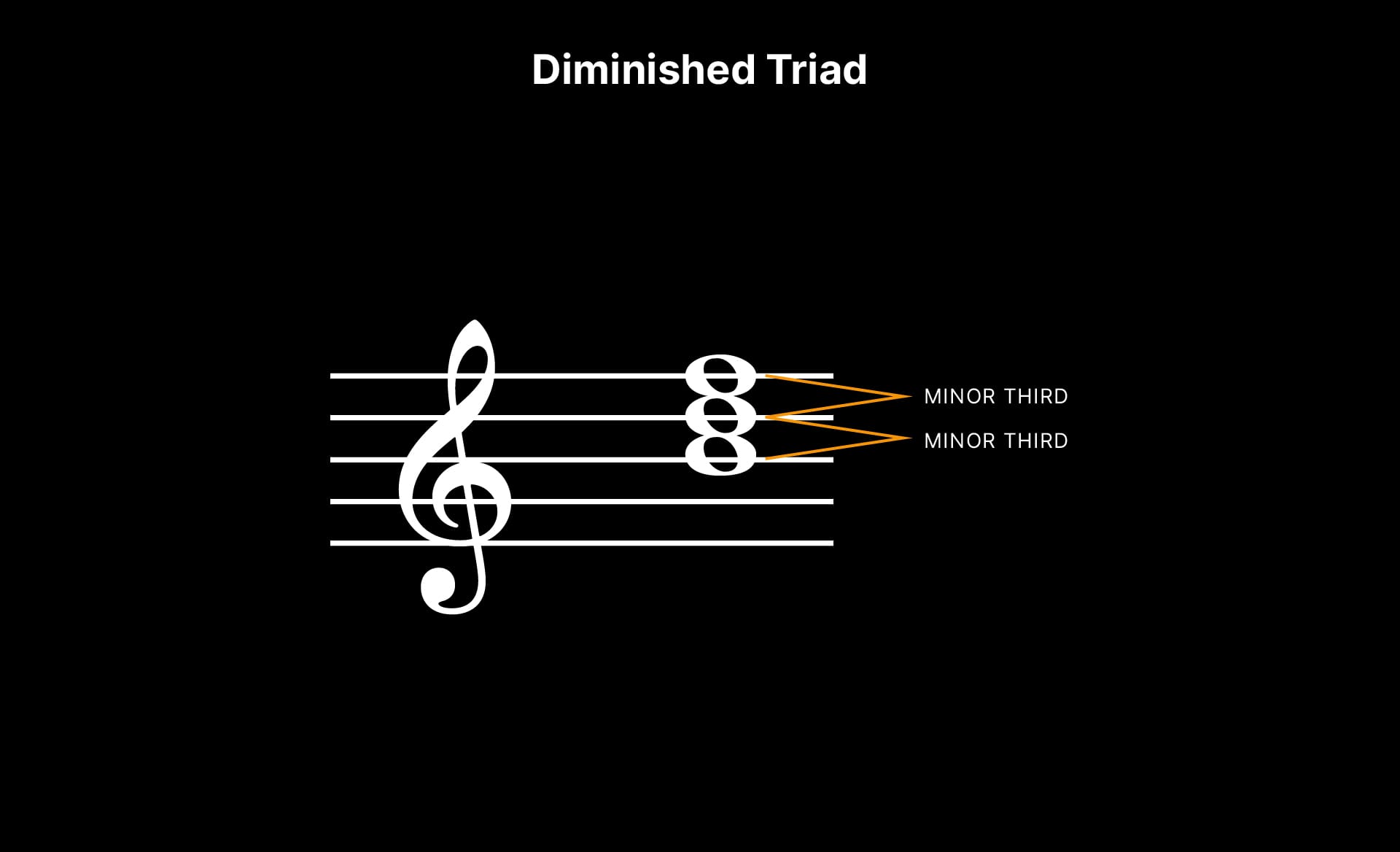This guide explores the diminished triad chord, covering its construction, properties, and musical applications. Whether you’re a seasoned musician or just starting your musical journey, this guide will provide a comprehensive understanding of this intriguing chord.
Understanding the Diminished Triad
The diminished triad chord possesses a unique sound often described as dissonant and tense. This quality makes it a powerful tool for composers seeking to create drama, mystery, or anticipation within their music. The chord’s instability suggests a desire to resolve to a more stable harmony, keeping listeners engaged and adding a touch of intrigue.
Its construction is simple yet distinctive:
- Root: The starting note of the chord.
- Minor Third: Three half-steps above the root.
- Diminished Fifth: Three half-steps above the minor third (six half-steps above the root).
This stack of two minor thirds is what gives the diminished triad its characteristic unsettled sound.
Building the Chord
The formula for a diminished triad is concise: 1 – b3 – b5. The “1” represents the root, “b3” denotes a minor third above the root, and “b5” indicates a diminished fifth above the root. For example, a C diminished triad (Cdim or C°) comprises the notes C, E♭, and G♭.
The diminished fifth is also enharmonically equivalent to a major sixth. This means it sounds the same as a major sixth, but its functional role within the chord is different. This interesting relationship adds to the versatility of the diminished triad.
One remarkable feature of the diminished triad is its symmetry. Like a triangle, no matter how you rotate it, it retains its shape. Similarly, all three inversions of a diminished triad—simply rearranging the order of the notes—sound virtually identical. This allows for smooth voice leading and harmonic flexibility within a composition.
| Inversion | Notes |
|---|---|
| Root Position | 1 – b3 – b5 |
| First Inversion | b3 – b5 – 1 |
| Second Inversion | b5 – 1 – b3 |
The Diminished Triad in Music Theory
Diminished triads appear naturally within certain scales. You’ll likely find them on the seventh degree of a major scale and the second degree of a harmonic minor scale. This doesn’t mean they are limited to these positions, but these occurrences provide a starting point for understanding their context within broader harmonic frameworks.
Because of their symmetrical nature, diminished triads can be substituted for each other even if their notes are spelled differently. This allows for enharmonic substitutions, offering composers a wider range of harmonic choices. For instance, a Cdim chord can be substituted with an E♭dim, G♭dim, or B♭♭dim chord, depending on the musical context.
Musical Applications
The diminished triad’s unique sound makes it incredibly versatile across various musical genres:
- Creating Tension: The inherent dissonance of the chord is ideal for building suspense and anticipation. It creates a sense of instability that naturally leads the listener to expect resolution.
- Facilitating Key Changes: The diminished triad can act as a bridge between seemingly distant keys, allowing for smooth and unexpected modulations.
- Adding Color and Depth: Like adding a unique spice to a dish, the diminished triad can enrich harmonies and add complexity to chord progressions.
Expanding the Diminished Sound: The Seventh Chords
Adding a seventh to the diminished triad creates two further variations: the half-diminished seventh chord and the fully diminished seventh chord.
Half-Diminished Seventh: (1 – b3 – b5 – b7) Adds a minor seventh interval above the root. For instance, a C half-diminished seventh chord (Cm7b5) consists of C, E♭, G♭, and B♭.
Fully Diminished Seventh: (1 – b3 – b5 – bb7) Adds a diminished seventh interval above the root. A C fully diminished seventh chord (C°7) contains C, E♭, G♭, and B♭♭ (enharmonically A). The fully diminished seventh chord possesses even greater symmetry, and any of its notes can function as the root.
| Chord Type | Intervals from Root | Example (C Root) |
|---|---|---|
| Diminished Triad | Root, minor 3rd, diminished 5th | C, Eb, Gb |
| Half-Diminished Seventh | Root, minor 3rd, dim 5th, minor 7th | C, Eb, Gb, Bb |
| Fully Diminished Seventh | Root, minor 3rd, dim 5th, dim 7th | C, Eb, Gb, Bbb (A) |
Ongoing Research and Future Directions
While much is understood about the diminished triad, music theory is a constantly evolving field. Ongoing research explores the psychological impact of its dissonance, examining how our brains process and react to its unique harmonic structure. There’s also continued study into its role in complex harmonic analysis, revealing intricate relationships between notes and keys. Some experts suggest that our perception of dissonance has evolved over time, potentially influencing how we hear and utilize these chords. This ongoing research may reshape our understanding of the diminished triad and its possibilities in the future.
Learn more about Deaffrication when a consonant sound changes from an affricate to a fricative. This seemingly unrelated phonetic phenomenon highlights the interconnectedness of sound and how subtle shifts can dramatically alter perception, much like the nuanced use of a diminished triad in a musical piece.












